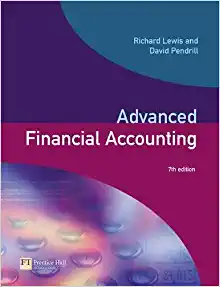

CASE 1 (25 points] Look at the below book-value balance sheet for Universal Corporation. The preferred stock currently sells for 15 per share and pays a dividend of 2 a share. The common stock currently sells for 20 per share and has a beta of0.8. The bonds currently sell at 935.82. The market risk premium is 10%, the risk-free rate is 6%, and the firm's tax rate is 40%. Instructions: 1. Calculate the firm's outstanding number of bonds, preferred shares and common shares. (4 points) 2. Calculate the firm's market value capital structure. (6 points) 3. Calculate the firm's costs of common equity, preferred stock and debt. (5 points] 4. Calculate the weighted average cost of capital. (5 points] 5. If the rm is considering an average risk project with an internal rate of return of 14%, should it accept the project? Explain. (5 points] BOOK-VALUE BALANCE SHEET (Figures in t millions) Liabilities and Equity Cash and short-term securities Bonds (par value 1000; coupon 8% paid annually; maturity 10 years; yield to maturity 9%) Accounts receivable Preferred stock (par value 20) Inventories Common stock (par value 0.10) Plant and equipment Additional paid-in stockholders' equity Retained earnings CASE 2 (25 points) Consider the following two projects: Year Cash Flow (Alpha) Cash Flow (Omega) O -(64,000 -652,000 46,000 25,000 N 68,000 22,000 w 68,000 21,500 458,000 17,500 Whichever project you choose, if any, you require a return of 11 percent on your investment. Instructions: 1. If you apply the payback criterion, which project will you choose? Why? (5 points) 2. If you apply the NPV criterion, which project will you choose? Why? (5 points) 3. If you apply the IRR criterion, which project will you choose? Why? (5 points) 4. If you apply the profitability index criterion, which project will you choose? Why? (5 points) 5. Based on your answers in (1) through (4), which project will you finally choose? Why? (5 points)CASE 3 (25 points) The company is considering a new four-year expansion project that requires an initial investment in manufacturing machinery of 1,670,000. The machinery will be depreciated straight-line to zero over its four-year tax life (depreciation rate is 25% per year). At the end of the project, the machinery can be sold for 26% of its original cost. The project requires an initial investment in net working capital of 198,000; all of which will be recovered at the end of the project. The project is estimated to generate 1,850,000 in annual sales; with annual costs of 1,033,000. The tax rate is 21 percent and the required return for the project is 15.4%. Instructions: 1. Complete the proforma below and determine free cash flows for each year of project's life. (20 points) 2. Would you recommend to accept or reject the project? Explain your decision. (5 points] Year Sales Costs Depreciation EBIT Taxes Net income Operating Cash Flow Capital expenditure Net Working Capital After-tax salvage value Free Cash Flow CASE 4 {25 points) The balance sheet for Serenity Corporation is shown below in market value terms. There are 2.4 billion shares outstanding. MARKET-VALUE BALANCE SHEET (Figures in C millions) Cash 3 15 Eq uity 4,022 Non-current assets 10,256 Liabilities 6 549 Total 10,571 Total 10,571 Instructions: 1. The company declared a cash dividend of 0.61 per share. It goes ex-dividend tomorrow. Ignoring any tax effects, what are the shares selling for today? What will they sell for tomorrow? What will the market value balance sheet look like after the dividends are paid? (10 points) 2. What if instead of cash dividend, the company has announced it is going to repurchase 1 billion worth of equity. What effect will this transaction have on the equity of the firm? How many shares will be outstanding? What will the price per share be after the repurchase? (10 points) 3. Ignoring tax effects, explain how the share repurchase is effectively the same as a cash dividend. (5 points)












